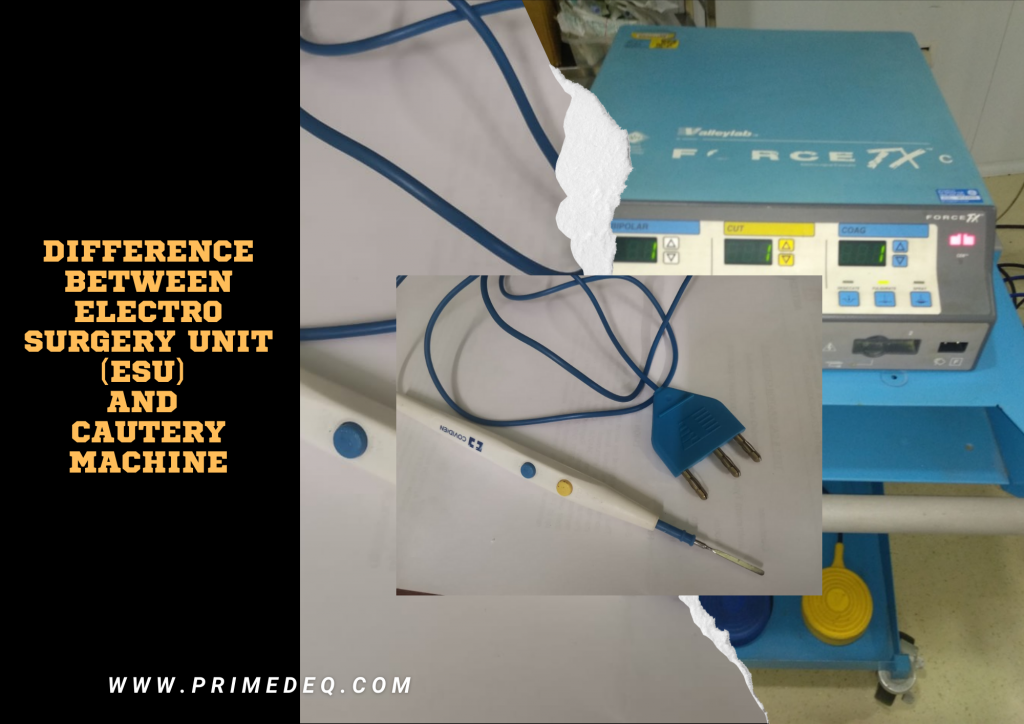
What is the difference between “electrocautery” and “electrosurgery”?
ESUs or Electrosurgical Units are commonly referred to as cautery machine. Are there any differences between a cautery machine or ESU?
“Cauterization” is the process of destroying tissue. This process may be used to kill certain types of small tumors, destroy skin growths or to seal-off blood vessels to stop bleeding. Cauterization can be done using a hot/cold instrument, electrical current, or a chemical that burns or dissolves the tissue. When electric current is used to heat the hand-piece for cauterizing the tissue, it is called “Electrocautery”.
In an electrocautery device, a direct current is typically used to heat a piece of metal on the tip of a handpiece, which is then used for cauterization.
A cautery machine is different from an Electro Surgical Unit or ESU, even though these terms are often interchangeably used.
Surgery is the branch of medical practice that treats injuries, diseases, and deformities by the physical removal, repair, or readjustment of organs and tissues, usually involving cutting into the body parts. Cauterization is one type of procedure performed in surgeries.
Hence ESU or Electro Surgery Units help in cutting through body parts. Electrosurgical units use alternating current with the appropriate frequency to cut and coagulate tissue. At the correct frequency, an alternating current can cut tissue without burning it.
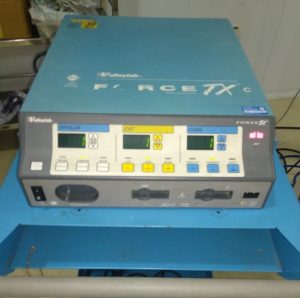
The Significant Differences
Here is a summary of the key differences between working of a Cautery machine and ESU (Electrocautery and Electro surgery):
| Particulars | Cautery Machine | Electro Surgery Unit |
| Key Objective | Using electric current to heat an electrode to place on the tissue so as to burn/ destroy it. | Pass electrical current through the tissue to Cut (or coagulate) it and not burn or destroy it. |
| Process | Electrocautery uses electrical current to heat a resistant metal wire (electrode) that is then applied to the tissue in order to burn or coagulate the specific area of tissue. | Electrosurgery passes alternating electrical current typically with high frequency between 300KHz – 3MHz through the tissue. This ensures that the current passes through the patient’s tissue as against producing an electric shock or burn. |
| Typical application | Cauterization is typically applied in superficial situations encountered by dermatologists, ophthalmologists, plastic surgeons, urologists, and related specialties. | ESU are used in many applications such as gynecology, ENT, cardiac, dermatology, plastic, maxillofacial, orthopedic, urology, neuro and general surgeries. The electrode selection depends upon and intended outcome, i.e. cutting, coagulation, dessicate or fulgurate tissue. |
| Size of the Unit | Electrocautery devices are usually small, battery operated devices as they only need electrode heating. | The ESUs are larger units encompassing radio-wave generators, |
| Type of Current | Direct Current (DC) | Alternating Current (AC). |
| Type of Electric Circuit | Open. Compared to electrosurgery, electrocautery does not require a closed circuit as it only heats the tip of the electrode and does not send a current through the body.
|
Closed. An ESU needs a closed circuit since the current needs to pass through the body and return to the generator, either through another electrode or dispersive plate or pad. |
| Type of units | – | Monopolar or Bipolar |
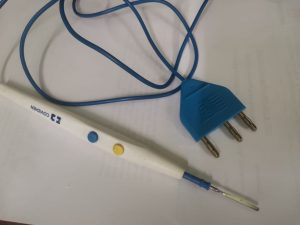
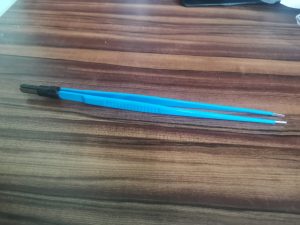
What is the difference between “monopolar” and “bipolar” electrosurgery units or cautery machine?
Electrosurgical units use alternating current with the appropriate frequency necessary to cut and coagulate tissue. The alternating current must flow through a closed circuit loop through the body part needing surgery. ESUs may be monopolar or bipolar. The difference between “monopolar” and “bipolar” electrosurgery is based on how the circuit is closed.
Electrosurgical forceps is a bipolar electrosurgical device. In electrosurgical forceps, the current from the generator, travels down one tip of the forceps, through the tissue, and over to the other tip of the forceps, back to the generator. This is how the circuit is closed in a bipolar ESU.
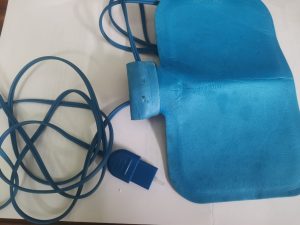
In a monopolar electrosurgery device, there is only one tip in the handpiece. The current travels from the generator to the electrode in the handpiece , then through the body to a dispersive pad or grounding plate typically on the opposite side of the body from the incision (instead of the other tip in a pair of forceps). The dispersive pad then sends the current back to the generator.
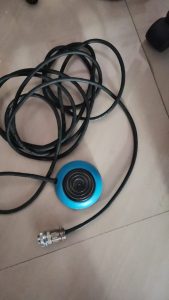
—————————————————————————————————————————
PrimedeQ is an e-Marketplace for buying, selling, renting, servicing and spares of medical equipment. We offer all types of used / refurbished medical equipment , including endoscopes, OT equipment, Laparoscopic Equipment, Lab equipment, X-Ray, TMT, ECG, anesthesia machine, ultrasound machines etc. We offer microdebrider, laparoscope , endoscope and ultrasound probe repair services etc.
Contact us on +91 8971223957/ 7019759765 or [email protected]
https://in.linkedin.com/in/shanthi-mathur-ab07838
